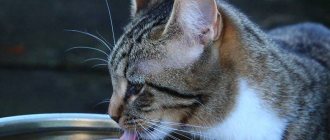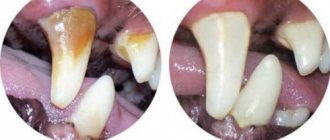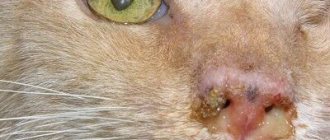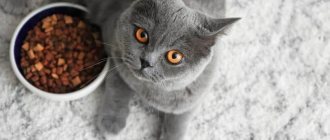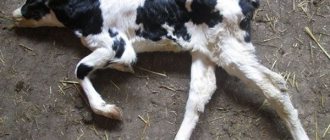Rules for fattening bulls at home
For raising for meat, exclusively meat breeds of bulls are purchased. These include the Charolais, British, Shorthorn, Kalmyk, Hereford, and Kazakh white-headed breeds. Fattening of calves of these breeds takes place in a short time. Individuals grow large, with a developed muscular system and strong bones.
Every farmer is recommended to keep a log of bull fattening
Interesting!
Each farmer is recommended to keep a journal where weight gain, feeding methods, daily doses, etc. will be indicated. This will make the work easier and allow you to adjust the diet for each individual.
Fattening bulls for meat at home does not pose a serious problem. From the moment of birth until 2 months of life, bull calves are given milk. From 2 to 4 months you can start introducing porridge and hay. The latter is purchased only of high quality, soft. It is easily digestible and contains selected herbs. Protein food – vegetables – is also introduced. On this diet, the animal grows quickly and does not suffer from digestive problems.
From about 4 months, you can add dried or green grass to the main diet (10-15 kg with a gradual increase in weight). Thus, the daily weight gain is at least 600 g. The young animals eat enough and do not suffer from obesity. At the age of 6-18 months, bull calves are surrendered for slaughter. If you keep them longer, the meat will not be soft, and with intensive fattening, you can donate animals even at 4-5 months.
Balance rations for bulls
Economic success in fattening bulls depends, in addition to optimal genetics, on the quality of feed used and the composition of diets.
Table 1 shows the most important feeds used in fattening bulls.
Table 1. Feed raw materials for fattening bulls
The energy content of feeds is measured in MJ of metabolizable energy. The exchange energy indicator allows you to determine the differences between individual components and takes into account the actual conversion.
An effective diet should contain 12-15% crude fiber and of this 40-50% should be structural crude fiber. This leads to the formation in the rumen of a ratio of acetic acid to propionic acid of 1.6-2: 1 and ensures optimal use of all offered nutrients.
Diet of fattening bulls
Also check out these articles
- Breed of chickens Faverolles
- Harvest varieties of strawberries
- Bee packages and their types
- Raspberry variety Golden Domes
Examples of diets for fattening bulls
There are a lot of feeding schemes for fattening bulls. In fact, each farmer adjusts the scheme to suit his needs and capabilities. Such schemes allow you to achieve rapid weight gain in a minimum period of time.
Important!
Any products that are fed to bulls must be of high quality, not spoiled, because young animals have a more delicate digestive system - this must be taken into account.
The diet of bulls is summer and winter. In summer, bulls mainly feed on greens with the addition of concentrated feed. In winter, the diet becomes more complicated. Since there is no green grass, you need to replace it with something else. To fill the animals' need for succulent food, root vegetables, vitamin and mineral supplements are introduced into the diet, and hay (straw), dry grass or silage are also fed. In addition, concentrated food is given in the same quantities as in the summer.
Keeping bulls up to 16 months
From 10 to 16 months the growing period begins. For feeding, the same methods are retained, but the amount of feed is increased. If a calf weighs 380 kg, then, depending on the feeding scheme, he is prescribed the following diet:
- haylage type: 2 kg of hay, 10 kg of haylage, 2 kg of concentrates, 50 g of phosphates and 40 of salt;
- silage-haylage type: 2 kg of hay, 14 kg of silage, 5 kg of haylage, 2 kg of concentrates; the amount of mineral supplements is left;
- combined method: 3 kg of hay, 5 kg of haylage, 10 kg of silage; 6 kg of root vegetables; concentrates, salts and phosphates does not change.
Usually the farmsteaders look at the appetite of the bulls. If the food in the feeders quickly disappears, this indicates that the animal is not getting enough to eat. This should not be allowed. If animals quickly ingest vegetables or silage, gastric stagnation or rumen overfilling may occur.
The feed simply will not be fully digested in the rumen and pass into the net. When the rumen and mesh are blocked in animals, food does not regurgitate into the oral cavity. The chewing gum disappears. This is a warning sign. Veterinarian assistance is needed.
The appetite of bulls should be controlled. They shouldn't go hungry. The portion is increased if the feeders quickly become empty. During the fattening period, young animals gain 700-800 g daily. If the cattle breed is early maturing, but at 16 months fattening bulls can weigh up to 500 kg.
Proper feeding of calves
For the most part, farmers stick to feeding their steers three times a day, with an equal amount of time in between. On average, per day for one young individual (2 months):
- 4 kg of hay;
- 4 kg of root vegetables;
- 2 kg of concentrates.
It is recommended to take soft, high-quality hay - it is better absorbed. Before serving, root vegetables are chopped into several parts or rubbed, this makes it easier for the bulls to eat them. Concentrates are poured 3 times a day, and not once for all three feedings, otherwise they may spoil in the feeder or the bulls will eat more than the prescribed amount.
Any new food is introduced into the calf diet gradually
Important!
Any new food is introduced into the diet gradually to test the reaction to it. In addition, the transition from summer to winter diet and back should also be carried out gradually, and not abruptly.
Increase feed intake
By feeding a complete mixed ration, the farmer can very easily measure the animals' daily feed intake by group. If steers consume no more than 2% of their live weight in dry matter per day (eg 500 kg bull = 10 kg DM feed), then the farmer must look for different ways to increase feed intake.
Ways to Increase Feed Intake
- Monitor the water supply and increase it if necessary!
- Water quality control!
- Measure the dry matter content of the diet - often the diet is too dry!
- Adding water as required so that the dry matter of the diet is 43% - it works like a real miracle!
- Give out fresh food 2 times a day!
- Measure the oxygen content in fattening rooms!
- If it's too dark, let the light in!
- Create enough space at the feeding table!
Author: prof. Gerhard Schwarting and Dipl.-Ing. Stefan Stehr. Translation by Elena Babenko, especially for
—————————————-
I look forward to your feedback and comments. Thank you very much!
Facebook In Contact LinkedIn Email
Types of fattening
We recommend reading our other articles
- What to feed a cow?
- How many square meters in one hectare
- Feeding cherries in spring
- How to plant melon seedlings
A good business selling beef can only be achieved if calves are fattened quickly at home. There are different types of accelerated fattening.
- When using grain fodder.
If you use crushed grain fodder, you can get good daily weight gain. Of course, you need to purchase high quality grain fodder. You can take wheat, barley in a ratio of one to one, or one or the other. In addition to grain, bulls are also fed hay, grass, and root vegetables. The table below shows approximate feeding rates depending on the age of the bull.
| Goby age | Feed rates (days) |
| 2-3 months | up to 600 g |
| 6 months | 3.5 kg |
| 1 year | 9 kg |
| 1 year and 2 months | 10-14 kg |
According to this feeding scheme, feed grain is provided until slaughter. Using this feeding method, you can achieve a weight gain of up to 500 kg by year. At the same time, individuals grow with a large amount of muscle and a small amount of fat, which is beneficial in terms of sales. The main advantage of this feeding is cost-effectiveness with high efficiency.
Feed raw materials for fattening bulls
- When using pulp.
The use of pulp in the diet of cattle allows you to gain weight up to 1 kg/day.
| Feed, in kg. | Fattening period | ||
| First month | Second month | Third month | |
| Beet pulp | 46 | 43 | 41 |
| Cereal hay | Do not give | Do not give | 2 |
| Spring straw | 4,55 | 3,55 | 3 |
| Concentrates | 1,5 | 2 | 3,5 |
| Salt | 0,3 | 0,4 | 0,5 |
This feeding method is more expensive, but pays for itself. When using this feeding method, it is important to accurately measure the amount of pulp fed. If there is more of it in the diet, the meat of the bulls will become watery.
Important!
When fattening bulls, it is important to find a middle ground so that individuals eat in moderation, but do not starve.
- When using silo.
Weight gain with this feeding is 950-1000 g/day.
| Feed, in kg. | Fattening period | ||
| First month | Second month | Third month | |
| Silage | Plenty | Plenty | Plenty |
| Wheat straw | 5 | 4,5 | 3,5 |
| Forb hay | Do not give | 1,9 | 2,8 |
| Concentrate mixture | 1,8 | 2,15 | 2,95 |
| Salt | 0,45 | 0,45 | 0,45 |
This is the basis of a bull’s diet during rapid fattening. You just need to choose one of the three proposed options and apply it. However, if necessary, nutrition can be adjusted in order to save money somewhere or increase the nutritional value of the feed, its quality or benefit.
Milk period
If a farmer takes dairy bulls for fattening, then he needs to take into account the characteristics of the dairy period when feeding. Bull calves, like heifers, are fed colostrum from birth during fattening. Concentrates begin to be administered at the end of 1 month. Grass and roughage are not given. Newborns do not develop a rumen that can process tough foods. The diet during the dairy period does not depend on the time of year.
It is necessary to observe certain points so that all parts of the stomach of calves are correctly formed, normal weight gain and accelerated growth occur. Body weight gain per day depends not only on feeding, but also on the breed of bulls.
Herefords and Aberdeen-Angus animals are capable of gaining up to 1500 g per day, individuals of the Simmental breed - 1300 g. Kazakh white-headed bulls have a daily weight gain of 1400 g. What diet is prescribed for calves during the dairy period (description by month)?
- Colostrum is given during all 4 weeks. A bull should drink 8-10 liters per day. On day 10, colostrum is mixed with salt, no more than 5 g. The same amount of phosphate supplement is added. From day 20, in addition to colostrum, 100 g of grain mixture is given. It is better to introduce barley or oatmeal. The flour is steamed and served as porridge. The amount of phosphate fertilizer is increased to 10 g.
- At 1 week, fattening bulls continue to be given colostrum, but the diet is supplemented with 200 g of hay. There is more porridge. Steam 200 g of crushed grain. 10 g of salt and 15 g of phosphates are added to the milk. Starting from day 10, a portion of milk is divided: 4 liters of whole milk and 4 liters of skimmed milk. Hay – 300 g. Porridge is made from 500 g of grain. From the 20th day of roughage, 500 g is already given. Porridge is prepared from concentrates, 700 g.
- The bulls are transferred to reverse, 10 liters. Salts, 10 g and 20 g of phosphates are added to porridge or milk. Concentrates – 1 kg. They begin to introduce potatoes, 200 g. From the 10th day, the portion of root vegetables increases to 300 g, hay is given 900 g, concentrates 1.4 g. On the 20th day, in addition to milk, the bull receives 1 kg of roughage, 500 g of potatoes, 1.6 kg grains in the form of porridge.
- The portion of skim milk is reduced to 8 liters. The amount of hay increases to 1.2 kg. Root crops give 1.5 kg, concentrates 1.6 kg. The bull should receive 12 g of salt, 25 g of phosphates. From the 10th day they begin to introduce silage - 500 g. It is better to use corn. From day 20, the calf receives 1.5 kg of hay, 1 kg of silage and root crops. Porridge is cooked from 1.6 kg of grain.
- Fattening calves are fed with reverse water. It is given in 8 liters. Subsequently, the amount of skim milk is reduced to 4 liters. The bull gets 2 kg of roughage, 1 kg each of silage and potatoes. The mash is made from 1.8 kg of concentrates. The amount of salt and phosphates remains the same. From day 10, increase the silage supply to 1.5 kg. From the 20th day, 2 kg of plant mixture is given.
- During the first 10 days, the calf is weaned off milk. If he demands, then he is given 2 liters. He eats 2.5 kg of hay and 3 kg of silage. He is allowed 1 kg of vegetables, 2 kg of concentrates. Increase the portion of salt to 20 g, phosphates to 25 g. From the 10th day, the bull is not given milk. The amount of hay is increased to 3 kg, silage to 5 kg. From day 20, the calf eats 6 kg of canned plant food.
More on the topic: How to treat a bruised udder in a cow?
After the milking period, which ends in six months, a bull can weigh more than 200 kg, depending on the breed.
Milk is stopped given to calves at the end of the 5th month. A prolonged milk period will provoke improper formation of the stomach sections and obesity. Adequate feeding accelerates the growth of young animals, but in heifers, milk affects reproductive function. They stop giving milk after 3 months. Otherwise, she may become infertile and accumulate a lot of fat.
For young animals, the combined feed KR-1 is chosen. It contains milk powder, feed yeast, meal, grass and bone meal, chalk, PKR-1 premix. Compound feed is added along with the grain mixture. Silage can be replaced with haylage. In summer, silage is replaced with green grass. They do not give concentrates. A portion of hay is left. In six months, a calf can eat up to 20 kg of grass. When breeding young animals as a business, it is necessary to take into account all the subtleties of the dairy period.
Supplements for Better Growth
Feed additives have a positive effect on increasing the body weight of bulls
All kinds of feed additives have a positive effect on increasing the body weight of animals, so they are often used when fattening bulls for meat at home. If you apply them according to the standards, the effect will be positive.
- Premixes, among which “Superpremix” is distinguished, are often used in animal husbandry. They are suitable for use both in large production and on a small farm, the main thing is to use them according to the instructions. The supplement contains a growth stimulator, flavoring, vitamins, and minerals. With regular addition of the premix, the fattening time is reduced by 42 days, and little feed is consumed. There is no negative effect on animals.
- Antibiotics are also fed in the feed to increase animal weight. So, when feeding animals food with antibiotics for a month, body weight increases by 5%. It is best to mix food with antibiotics and give it to animals. Muscular and oral administration of these substances gives worse results. In this case, Penicillin or Streptomycin is used.
Raising bulls as a business is profitable
Important!
When fattening bulls, it is recommended to castrate them. Castration allows you to obtain more tender, fatty meat, not as tough as that of animals that did not undergo this procedure.
- Prebiotics not only have a positive effect on fattening bulls, but also increase the immunity of animals. They are given from 4 days after birth. Up to 3 weeks it is mixed with milk and then fed with food. Among the well-known remedies, we can recommend “Prestarter”. The main condition when feeding prebiotics is constant access to clean, fresh water.
- Biostimulants can increase daily weight gain by 15%. They are usually used from 6 months. So if an individual goes to milk production after six months, this option will not work. Of the well-known biostimulants, Krezatsin is very popular. Biostimulants are used by adding to water or food, where it can completely dissolve. Before use, it is important to carefully study the instructions and dosages.
- Cereal supplements are the most effective fattening for bulls. On a diet of grains and legumes, they grow quickly and their meat has a tender texture. Young individuals eat cereals and legumes very well, so there are usually no problems with the implementation of the method, but in terms of costs it may not be profitable.
FATTER A CALL UP TO 700 KG
It’s a shame that we still don’t do much fattening of bull calves, despite the fact that at current purchasing prices for beef this could be profitable. Beef is a very healthy and healthy product. In recent years, many farms have disposed of newborn bulls or sold them for next to nothing at one month of age. I know from experience that other owners, having adopted a bull for fattening, experience difficulties. For some reason, their animal doesn’t eat well and therefore grows slowly. And it is difficult to sell such veal - there is little meat, mostly bones.
We would like to share our experience, which is widely used in the Buguruslan district of the Orenburg region and other regions of Russia. It allows you to dramatically increase the productivity of bulls and does not require large additional costs. The technology was developed at the experimental base of LLC Biotechnological Orenburg Region.
It is better to use bulls two to three months old for fattening, although one month old is also possible. When fattening a calf, you need to remember the characteristics of its body. In all ruminants, at the age of 3 - 5 weeks, the digestive system is actively developing. The main organ through which nutrients enter the body is the intestine. Little enzymes that help digestion are produced. Under natural conditions, with free access to mother's milk and complementary foods, calves eat little and often. Small portions are absorbed well by babies even with low production of digestive enzymes. In the body of a healthy calf, up to two to three months of age, the contents of the intestine are finally processed by the normal microflora of its thick section (mainly lactic acid bacteria and bifidobacteria). They also regulate the rate of removal of ballast, as well as waste products and toxins (dying cells of the intestinal mucosa, ammonia, urea, hydrogen sulfide, etc.). If the calf eats rarely and in large quantities, the food, especially of animal origin, does not have time to be completely digested, it becomes stale, toxins are formed, and self-poisoning of the body occurs. This environment is favorable for enterobacteria that generate toxic products. They actively multiply and block metabolic processes, causing intestinal upset. That is why the calf eats poorly, grows slowly, often gets sick, and develops joint diseases.
That is why, when starting to fatten one-month-old calves, we advise feeding them frequently and in small portions, with constant access to good hay. If calves are fed irregularly and rarely, then hungry calves greedily eat excess feed that they cannot digest. We suggest that from the first day of fattening and then constantly give them the probiotic “Lactobifadol” with the mixed feed, which supplies the body with normal microflora. Since calves eat more hay and concentrates from two to three months of age, their ruminal digestion begins to function. Rough feed, entering the rumen along with water, is subjected to mechanical and chemical processing. It is mixed, further crushed - chewed, regurgitated, moistened with alkaline saliva and returned to the rumen. The best conditions for microorganisms are created in the digestive tract. If we continue to constantly give the bulls a probiotic, we sharply increase the activity of enzymes that improve feed absorption. Bacteria actively produce vitamins, which means there is no need to prescribe them additionally. Other biologically important components are also formed, metabolism improves, which means productivity is significantly stimulated. According to the scheme that we recommend, it is better to feed animals three times a day (at 6, 14 and 22 hours). Of course, good care for them is also necessary. It is better to remove manure three times, after each feeding, and clean the feeders once a day before evening feeding.
The probiotic “Lactobifadol” should be given daily with each feeding throughout fattening. Instead of mixed feed, it is cheaper and more effective to use crushed grain fodder, the amount of which must be increased gradually. A bull at two to three months of age is given approximately 0.5 - 0.6 kg of grain fodder per day. Then, by six months, the norm is gradually increased to 3-5 kg, and for a one-year-old - to 6-9 kg. The weight of a bull at this age when fattening according to the proposed scheme is 320-400 kg. By the age of 14 months, the grain fodder norm is increased to 10, if possible, to 14 kg and maintained at this level for up to 18 months. By this time, the weight of the animal reaches 600-700 kg. It gains 1100-1600 g of weight per day. Fattening to this weight is the most economically profitable, since the slaughter yield of carcasses increases to 60% (with a weight of 320 kg, the slaughter yield is about 50%). It is desirable that the grain fodder consist of equal parts of wheat and barley. Feeding with wheat or barley alone is allowed, but this somewhat worsens the result.
The daily norm of grain fodder is divided evenly into three feedings. Before feeding, each portion is filled with hot water (4-5 liters of hot water for 2 kg of crushed grain fodder), table salt is added, and allowed to cool to a temperature of 40-45 degrees. Then the probiotic “Lactobifadol” (6 g of probiotic or 1 teaspoon) is added to the mixture with each feeding to bulls up to 6 months; 1 tablespoon, or 12.5 g with each feeding for bulls over 6 months old). The mixture must be cooled before adding the probiotic, otherwise the living microorganisms that are included in its composition die. After grain feed, the bulls are given clean water (preferably warm). Then they give hay or good haylage in abundance. Silage is undesirable because its quality may be poor, which will inhibit weight gain. Bulls are given tricalcium phosphate or chalk (calcium carbonate) to improve bone structure. When we began to introduce this method of fattening in the Orenburg region, all the village residents came to look at the animals, since many of them had never seen animals in such condition. At the experimental base of Biotechnological LLC, where the technology for grain-fed cattle using Lactobifadol has been developed, managers of those enterprises who once sold calves at one month of age come to look at the bull calves.
The probiotic "Lactobifadol", as studies have shown, significantly improves digestion processes in animals, appetite, and normalizes metabolism. It reliably protects the scar from atony (bloating). Against the background of high volumes of grain fodder, acidosis does not occur. Prevention of diarrhea with a probiotic is very important, as it sharply reduces weight gain. The drug is environmentally friendly, does not cause complications or side effects, and does not accumulate in the organs and tissues of the animal. It is important that the probiotic does not contain microorganisms that produce feed antibiotics, as well as bacteria of genetically modified strains. Thus, owners using this drug have no restrictions in the production of environmentally friendly biological products. The probiotic “Lactobifadol” is included in the composition of milk replacer (whole milk replacer) of the “Growlac” brand and in this form can be introduced into the diet of bulls during the early stages of fattening. Later, you can give specialized feed enriched with Lactobifadol. The meat obtained after such fattening differs from ordinary meat in its good taste, aroma, and delicate texture. It is in demand among buyers, and in the production of sausages it greatly improves their quality and sales, as noted by workers at meat processing plants.
Everything that we have said here about the use of the drug “Lactobifadol” cannot be transferred to other probiotics, since they differ in the composition of microorganisms, production technology, quality and dosage recommendations.
N.V. Danilevskaya Moscow State Academy of Veterinary Medicine and Biotechnology named after. K.I. Skryabina O.A. Vashurin, A.S. Unshchikov Biotechnological LLC (Buguruslan, Orenburg region)
Editorial Board of the magazine "Yard Livestock and Economy" Here you can subscribe to the magazine "Yard Livestock and Economy"
Sales and costs
Raising bulls as a business is profitable if you approach the matter correctly. The fact is that before the sale of the first product you will have to spend a lot of money. The main costs in this case:
- buying animals;
- veterinary services;
- purchase of feed;
- fuel, electricity, water;
- taxes;
- repair of equipment, calf barn, fences and other things.
And this is the case if only the family works on the farm, and there are no additional employees who need to be paid!
Not only meat is sold, but also horns, skins, offal; fertile individuals can be mated with females for a fee. You can also make money by selling manure and milk, if you have cows and not just bulls.
To get the maximum benefit from breeding, you need to seriously think about where the products will be sold. Sales sites are established before the animals go to slaughter! This is very important because the meat must be raised fresh, and not after several days or weeks. So 1-2 months before slaughter, it is important to find places that will accept finished products and conclude an agreement with them.
Fattening bulls for meat at home is a well-known business. Small farmers and large entrepreneurs make good progress in this business, receiving a stable income, so this is quite realistic. But for the business to be beneficial, you need to be able to establish contacts, not be afraid to experiment with the diet of animals, and be able to work on a farm.
How much food does an animal need per day?
When fattening, it is necessary to strictly adhere to the amount of food required per day for each animal. The exact parameters depend on the breed of the selected bull, but approximate general rules apply.
The process should begin at the age of 2-3 months. By this point, the formation of the digestive system is sufficiently completed. Early use of complementary foods is not advisable. The lack of necessary enzymes in the gastrointestinal tract prevents complete digestion, preventing weight gain.
It is required to maintain the ratio of green mass, vegetables and grain.
| Age (in months) | Daily food intake (kg) | ||
| Hay/fresh grass | Vegetables | Grain mixtures | |
| 2-3 | 5 | 6 | 0,8 |
| 5-9 | 6 | 7 | 4 |
| 10-14 | 7 | 9 | 9 |
| 14-18 | 8 | 13 | 14 |
By 12-18 months, depending on the breed and size, the bull is transferred to a feedlot. His weight should by this time be 350-400 kilograms. Further increase in weight occurs due to an increase in the proportion of fattening.
The nuances of stall feeding
This option can be used at any time of the year. It is convenient for increasing the weight of young and adult animals. The diet focuses on introducing:
- silo
- molasses
- beet pulp
- potato pulp
The total duration is about 90 days. They are divided into three periods:
- 30 days of the initial stage
- 40 average
- 20 final
During the first two periods, cattle receive fairly cheap food elements. At the last stage, the amount of concentrated feed increases, which helps increase muscle mass.
The use of pulp shows good indicators of weight gain. About 65 kg. It contains a large percentage of carbohydrates and calcium. The diet is enriched with feed, which contains a significant percentage of proteins.
The effect of castration of a bull on the amount of meat
The issue of castration of a bull when fattening for meat is quite controversial. Many breeders advocate this procedure. In castrated individuals, the meat has a more delicate consistency and good taste. Often this is how marbling of meat is achieved. Uncastrated animals have leaner meat.
But, it is worth noting that under equal housing conditions, for every kilogram of weight gain, castrated animals consume 0.5-1.2 kg more feed than an ordinary bull. In addition, the difference in live weight by 12 months of age can be tens of kilograms in favor of uncastrated individuals.
Also, after castration of a bull, the amount of sex hormones secreted sharply decreases. This in turn greatly slows down metabolic processes in the body. As a result, fat tissue begins to grow much faster than muscle tissue. Accordingly, castrated cattle often develop obesity.
Castration method
The time of castration is also important. Many breeders castrate bulls before fattening begins, some carry out the procedure at 3 months of age. But it is worth noting that none of the approaches is justified. It is at this time that the animal is actively growing, gaining muscle mass. And if castration is carried out, the bull may subsequently lag significantly behind its peers in growth.
The age of 6-6.5 months is considered more suitable for such a measure. The correct muscle corset has already been formed by this age and castration will not greatly affect the growth rate. It is best to carry out the procedure in the spring, when the herd has not yet gone out to pasture. If age does not allow you to meet this deadline, castration can be postponed to the fall.
In general, many experts recommend castrating only those individuals that are kept on pastures and pastures for most of the year. This will significantly calm their temper and make them less aggressive. Accordingly, caring for castrated animals will be simpler and safer.
For livestock kept in chain stalls, such a measure will be unnecessary and will only interfere with the good growth and weight gain of the animal.
Cereal supplements
The use of cereal and legume diets is the way to rapid weight gain in bulls. Animals raised on this feed produce soft, tender meat products, eating green mass containing fiber and vitamins. The diet is aimed at intensive rearing, and young animals gain weight well.
Bulls for meat
For a home farm, it is important to pay attention not only to the quality of the feed, but also to the place of distribution. The premises where animals are kept must be clean so that pathogenic microorganisms cannot cause a particular disease. You shouldn’t think that all the care of cattle consists of distributing feed and turning the livestock out to pasture; here you need to put in a lot of work to get good meat products. The above recommendations apply to all breeds of cows: Simmental, Holstein and others.



